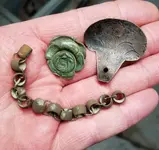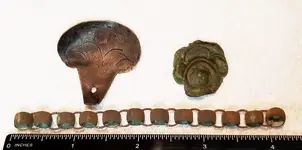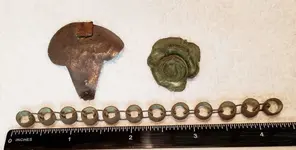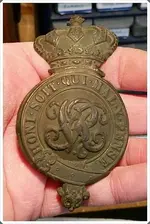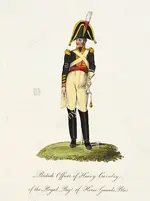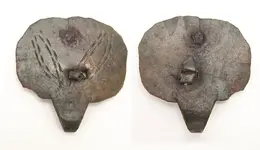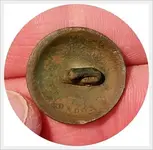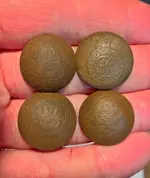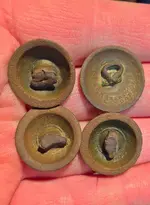- Joined
- Apr 24, 2010
- Messages
- 12,923
- Reaction score
- 27,656
- Golden Thread
- 1
- Location
- Upper Canada 🇨🇦
- 🥇 Banner finds
- 1
- 🏆 Honorable Mentions:
- 3
- Detector(s) used
- XP Deus, Lesche Piranha 35 Shovel & 'Garrett Carrot'
- Primary Interest:
- Relic Hunting
I found these two relics in the top row, in 2015 in the same field behind a c1820 farmhouse.
The length of chain I found at another c1820 homestead site.
I have know idea what these pieces may have been from, so any help would be appreciated.
Thanks,
Dave
The length of chain I found at another c1820 homestead site.
I have know idea what these pieces may have been from, so any help would be appreciated.

Thanks,
Dave
Attachments
Last edited:



